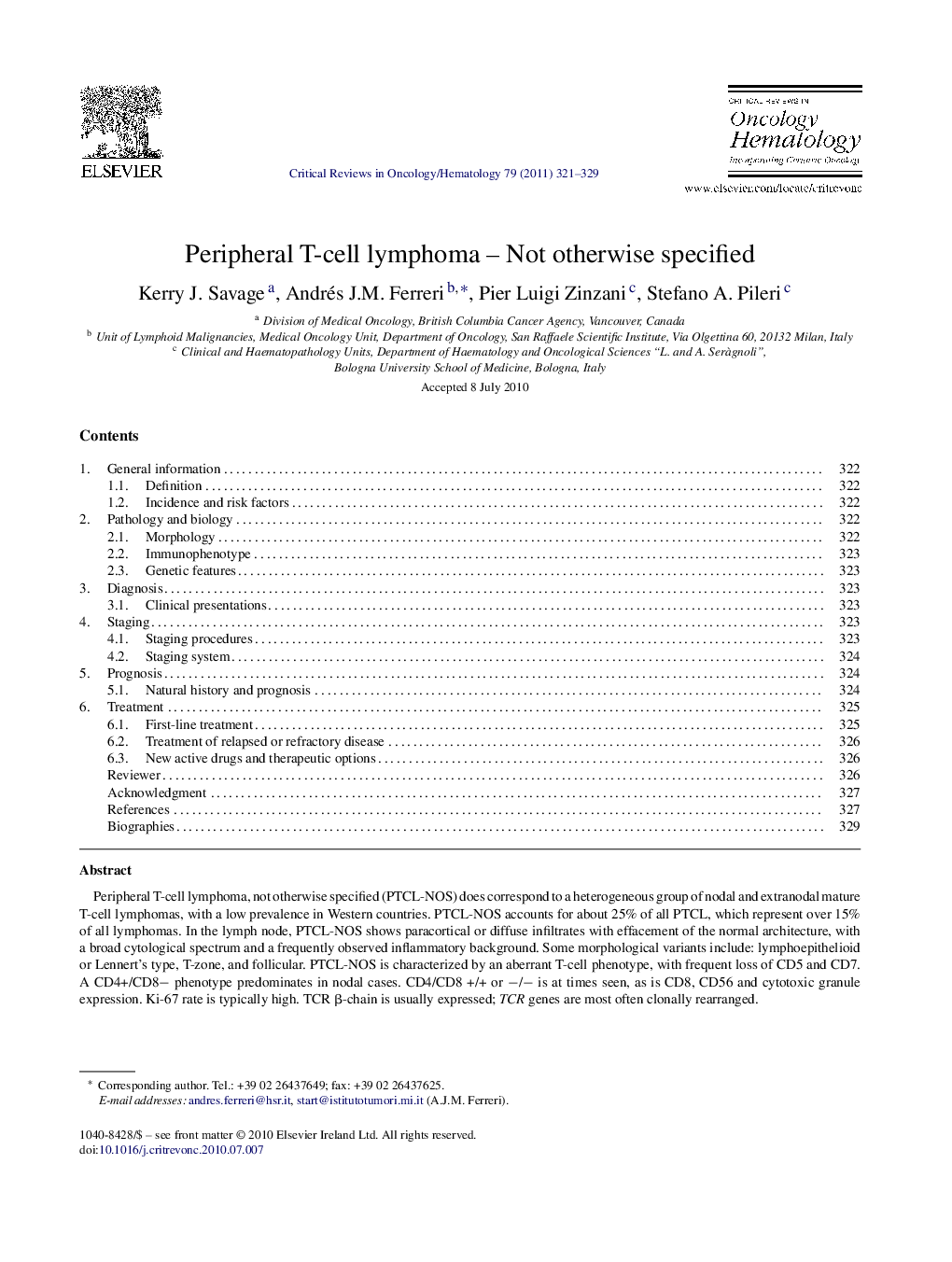| کد مقاله | کد نشریه | سال انتشار | مقاله انگلیسی | نسخه تمام متن |
|---|---|---|---|---|
| 3329187 | 1212378 | 2011 | 9 صفحه PDF | دانلود رایگان |

Peripheral T-cell lymphoma, not otherwise specified (PTCL-NOS) does correspond to a heterogeneous group of nodal and extranodal mature T-cell lymphomas, with a low prevalence in Western countries. PTCL-NOS accounts for about 25% of all PTCL, which represent over 15% of all lymphomas. In the lymph node, PTCL-NOS shows paracortical or diffuse infiltrates with effacement of the normal architecture, with a broad cytological spectrum and a frequently observed inflammatory background. Some morphological variants include: lymphoepithelioid or Lennert's type, T-zone, and follicular. PTCL-NOS is characterized by an aberrant T-cell phenotype, with frequent loss of CD5 and CD7. A CD4+/CD8− phenotype predominates in nodal cases. CD4/CD8 +/+ or −/− is at times seen, as is CD8, CD56 and cytotoxic granule expression. Ki-67 rate is typically high. TCR β-chain is usually expressed; TCR genes are most often clonally rearranged.PTCL-NOS typically occurs in adults (median age 55–60 years), with a higher prevalence in males. It presents more often as disseminated disease, occasionally with eosinophilia, pruritis or hemophagocytic syndrome. Patients often have B symptoms, generalized lymphadenopathy, bone marrow infiltration, and extranodal involvement, with high or high-intermediate IPI score in 50–70% of cases. Prognosis is poor, with a 5-year OS of 20–30%. Some variables, like ST2(L), CXCR5, CXCR3, EBV infection, cytotoxic granule expression, high proliferative index, NF-κB expression, were proposed as prognostic indicators, but the IPI score, and its variant called PIT, remains the most effective prognostic factor.Patients with PTCL-NOS should be treated with anthracycline-containing chemotherapy, followed by radiotherapy in cases of stage I–II disease. This strategy is associated with an overall response rate higher than 60%, but the 5-year overall survival is only 20–30%. Upfront high-dose chemotherapy supported by autologous or allogeneic SCT is an investigational approach, with a 4-year overall survival of about 40%. Patients with chemosensitive relapse respond favorably to high-dose chemotherapy and ASCT, with long-term survival rates of 35–45%. Graft-versus-lymphoma effect following allogeneic SCT has been observed; and reduced intensity conditioning emerges as an attractive strategy for frail patients. Most patients with PTCL-NOS are enrolled in prospective trials to explore new approaches, and new agents, like gemcitabine, alemtuzumab and pralatrexate, are being investigated.
Journal: Critical Reviews in Oncology/Hematology - Volume 79, Issue 3, September 2011, Pages 321–329